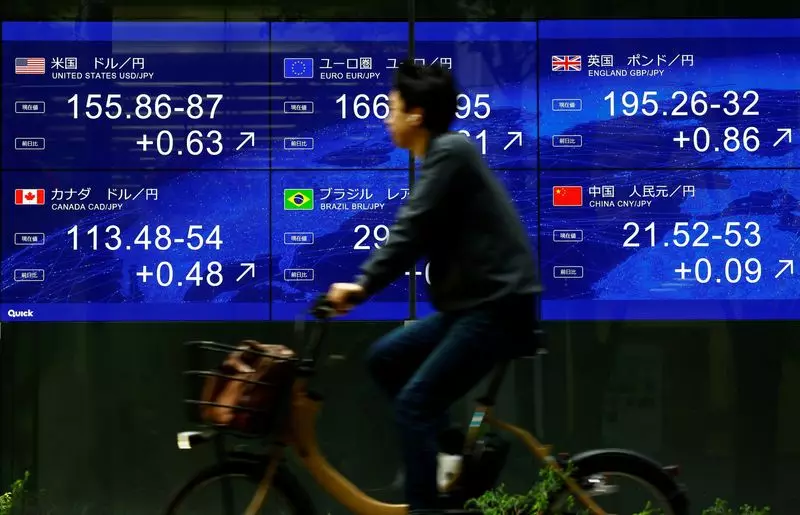As we step into a new week, Asian markets demonstrated restrained movements amid a backdrop of high U.S. Treasury yields, which have implications for both equity valuations in Wall Street and the broader currency market. This article delves into the interplay of economic indicators, investor sentiment, and asset performance, while highlighting the ongoing volatility shaped by geopolitical factors and monetary policy shifts.
Asian shares began the week on a cautious note, reflecting the ripple effects of elevated Treasury yields. Specifically, the MSCI Index for Asia-Pacific, excluding Japan, fell slightly by 0.2%. Despite this minor decline, it remains impressive with a 16% increase year-to-date. Japan’s Nikkei index experienced a 0.9% dip, yet it retains remarkable gains of about 20% for the year 2024. Meanwhile, South Korea’s market struggles continue, grappling with political instability and a dismal 9% downturn thus far.
The juxtaposition of these regional performances illustrates varying economic sentiment; in particular, the impact of national policies and external economic pressures. South Korea’s recent turbulence is underscored by the tragic incident involving Jeju Air, further dampening investor confidence and highlighting the broader systemic vulnerabilities in the airline sector.
Expectedly, the upcoming economic indicators are capturing investor attention. The anticipated PMI factory surveys from China, set to be released Tuesday, could provide fresh insights into the manufacturing sector’s health. As for the U.S., the ISM survey due Friday will help gauge domestic economic activity and could drive market sentiment moving forward.
Despite a broad sell-off in Wall Street last Friday, the S&P 500 and Nasdaq reported impressive gains of 25% and 31%, respectively, year-to-date. This upward trajectory, however, raises concerns over rich valuations relative to the current backdrop of high Treasury yields. The 10-year Treasury yields are positioned near eight-month highs of 4.631%, highlighting an environment where the higher cost of borrowing could temper growth expectations for corporate earnings in the near future.
Investor eagerness surrounding projected earnings growth appears to be somewhat restrained. Analysts expect a 12.47% rise in earnings for 2024, tapering to a projected growth of just over 10% for 2025. Such reflections arise from cautious optimism against a landscape characterized by heightened borrowing costs and prospects of sustained restrictive monetary policy by the Federal Reserve.
Quasar Elizundia, a research strategist at Pepperstone, articulates that the rise in bond yields, attributed mainly to reassessments of monetary policy, is causing waves of concern across investment portfolios. The expectation that the Federal Reserve might maintain tighter monetary policies longer than anticipated could limit corporate growth further, compelling investors to reevaluate their strategies.
The ongoing environment has also bolstered the U.S. dollar, which surged by 6.5% against a basket of major currencies this year. The euro, for example, has depreciated over 5%, hovering near a two-year low. This strength in the dollar influences commodities, particularly gold, which despite being $2,624 an ounce, remains higher than previous months, driven largely by the metal’s appeal as a hedge against inflation.
Conversely, oil prices are pressured, impacted by subdued demand from China and OPEC’s ongoing efforts to manage supply dynamics. As Brent crude and U.S. crude hover around $74 and $70, respectively, the market navigates a complex landscape where demand forecasts remain uncertain.
Asian markets commenced the week in a cautious mode, influenced by high U.S. Treasury yields and geopolitical uncertainties that continue to shape investor sentiment. With critical economic indicators approaching, market participants will be keenly scrutinizing any signs of strength or weakness within both regional and global economies. The interplay among equities, currencies, and commodities will be pivotal to watch in the coming weeks as investors maneuver through this uncertain terrain marked by evolving fiscal policies and economic indicators.

